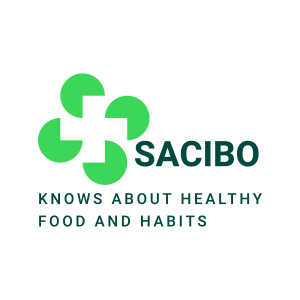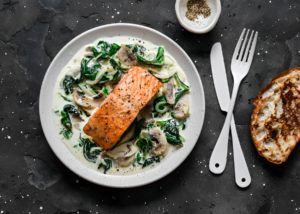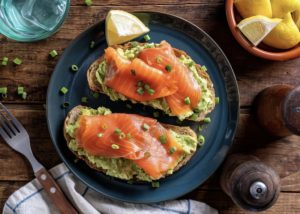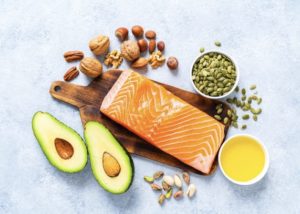- Home
- /
- Body
- /
- Organs at Work
- /
- His Majesty Microbiom: Why...
- /
- His Majesty Microbiom: Why...
- 1. The Nutritional Spectrum
- 2. The Vital Role of Dietary Variety
- 3. Microbiome and Health
- 4. Diversity and Immunity: The Microbial Shield
- 5. Diversity and Allergies: The Balancing Act
- 6. Diversity and Skin, Hair, and Nails: The Beauty of Balanced Nutrition
- 7. Diversity and Extra Weight: The Weighty Connection
- 8. Diversity and Frequent Colds: Strengthening Your Immunity
- 9. Gut-Brain Connection: Where Nutritional Diversity Meets Mental Wellness
- 10. Promoting Gut Health: A Cornerstone of Wellness
- 11. Prebiotics and Probiotics
In a world overflowing with culinary delights and dietary options, the choices we make about what we put on our plates extend far beyond mere sustenance. Our diets are the vibrant canvases upon which we paint our health, well-being, and vitality. Within this intricate and multifaceted culinary landscape, a powerful truth emerges – healthy eating is, at its core, Variety in Eating.
This extensive exploration into the art of nutritional diversity unravels the compelling reasons why embracing a diverse diet is not only a gustatory pleasure but also a profound investment in our overall health. The journey delves into the intricate nuances of the nutritional spectrum, unveils the pivotal role of variety, and peels back the layers of the gut-brain bonds. We’ll traverse the fascinating terrain of microbiome health and how it influences various aspects of our well-being. The path leads us to discover the secrets behind promoting gut health through prebiotics and probiotics.
Whether you’re seeking to bolster your immune system, decrease the frequency of common colds, fend off allergies, or unveil the natural beauty that resides within, this journey through nutritional diversity is a testament to the transformative power of the foods we eat. Each bite is an opportunity to nurture the intricate ecosystem that is our body and to unlock the secrets of a balanced and harmonious life.
Join us as we embark on this gastronomic adventure, exploring the connection between dietary veriety and vibrant health. Together, we will uncover the art of varied eating and celebrate the myriad flavors and benefits it brings to our lives.
1. The Nutritional Spectrum
1.1. The Rainbow Diet: Nature’s Palette for Vibrant Health
In the world of nutrition, the phrase “eating the rainbow” isn’t just a catchy slogan; it’s a simple yet profound guide to nourishing your body with an array of vital nutrients. The Rainbow Diet is a celebration of nature’s vibrant, colorful bounty, offering a vivid range of fruits and vegetables that goes far beyond mere aesthetics. Each color represents a unique set of phytonutrients, antioxidants, and health-boosting compounds that provide to your overall well-being.
a. Red: The Radiant Heart Protector
The red end of the spectrum is a testament to the power of lycopene, an antioxidant that may lower the risk of heart disease and determined cancers. Tomatoes, strawberries, and watermelon are all sources of this heart-healthy pigment, making them excellent choices for a crimson addition to your plate.
b. Orange and Yellow: Sun-Kissed Energy
Foods in this category, such as carrots, sweet potatoes, and mangoes, are rich in beta-carotene, a precursor to vitamin A. These nutrients support vision, promote healthy skin, and contribute to a sturdy immune system. By including these bright choices, you’re not only fueling your vitality but also adding a dash of sunshine to your diet.
c. Green: Nature’s Nutrient Powerhouses
The green section represents the ultimate health boost. Leafy greens such as kale and spinach are crowded with vitamins, minerals, and chlorophyll, known for its detoxifying properties. Broccoli and Brussels sprouts offer sulfur compounds that may assist in cancer prevention. By incorporating a variety of green vegetables into your meals, you’re supplying your body with a rich source of nutrients to fuel energy and keep you feeling rejuvenated.
d. Blue and Purple: Antioxidant Elegance
The deep, rich colors of blueberries, blackberries, and purple grapes indicate a high concentration of antioxidants. These compounds are renowned for their ability to combat oxidative stress, decreasing the risk of chronic diseases and supporting cognitive function. The deep hues not only please the eye but also contribute to your overall vitality.
e. White: Allicin’s Armor
White vegetables such as garlic and onions contain allicin, a potent compound with antimicrobial and heart-protective properties. The subtle beauty of these foods hides a robust defense mechanism for your body’s health. Including these in your diet adds a layer of protection against various illnesses.
f. The Rainbow Diet: A Feast for the Senses
Incorporating a diverse array of colorful fruits and vegetables into your meals not only creates a visually appealing plate but also offers a myriad of health benefits. Each color in the Rainbow Diet serves as a testament to the remarkable range of nutrients provided by Mother Nature. By embracing this colorful approach to eating, you are not only savoring a feast for the senses but also nourishing your body in a way that ensures optimal health and vitality.
1.2. Whole Grains: The Wholesome Foundation of Varied Eating
Whole grains are nature’s gift to a diverse and balanced diet. They are the unrefined, unprocessed seeds of grasses that are not only rich in nutrients but also packed with the kind of fiber that endorses your general health. When you make whole grains a regular part of your diet, you’re building a sturdy foundation for well-being while simultaneously savoring a world of flavors and textures.
a. Fiber, Nutrients, and Flavor: The Triple Play of Whole Grains
The beauty of whole grains lies in their nutritional diversity. They are a rich source of dietary fiber, which not only contributes healthy digestion but also facilitate regulation blood sugar levels. Furthermore, they’re brimming with vitamins and minerals such as B vitamins, iron, and magnesium, all of which are essential for energy production, red blood cell formation, and maintaining strong bones.
But the appeal of whole grains isn’t just limited to health benefits; it extends to the palate as well. The nutty, earthy, and sometimes slightly sweet flavors of whole grains add depth and variety to your meals. From the subtle elegance of quinoa to the comforting warmth of brown rice, whole grains introduce a captivating range of tastes that complement a wide spectrum of dishes.
b. Versatility in the Kitchen
Whole grains are not only nutritionally dense but also remarkably versatile. They can be the star of your meal or a supporting character, adapting to different culinary traditions and flavor profiles. You can use them as a ground for grain bowls, stuff them in vegetables, or turn them into mouthwatering side dishes. From couscous in Mediterranean cuisine to farro in Italian fare, there’s no shortage of options for infusing your diet with the flavors and textures of whole grains.
c. The Whole Picture of Health
By embracing whole grains, you’re not just enhancing the flavors of your meals; you’re also investing in your long-term health. Whole grains have been connected to a discouned risk of heart disease, diabetes, and even certain types of cancer. They’re a valuable source of complex carbohydrates that provide sustained energy, helping you stay active and alert throughout the day.
In the realm of nutrition, whole grains stand as an embodiment of both health and diversity. They enrich your diet with a tapestry of flavors and textures, making healthy eating not only nourishing but also genuinely enjoyable. So, next time you’re in the kitchen, consider the wholesome appeal of whole grains – your palate and your well-being will both thank you.
1.3. Proteins from Multiple Sources: A Tapestry of Nutritional Excellence
When it comes to proteins, diversity is not just a culinary delight but a nutritional necessity. Our bodies require a complex array of amino acids to function optimally, and obtaining these amino acids from various sources ensures that we meet our protein requirements while reaping a spectrum of health advantages. Incorporating proteins from multiple sources into your diet is like weaving a tapestry of nutritional excellence that supports your overall well-being.
a. Animal Proteins: A Complete Protein Package
Animal sources of protein, such as lean meats, poultry, and fish, are often regarded as utter proteins. This means they provide all the crucial amino acids our bodies need for muscle growth, repair, and overall health.
More about red meat read here: Savoring the Sizzle: The Multifaceted Story of Red Meat
Fish, in particular, is a abundant source of omega-3 fatty acids, known for their heart-protective properties. By including a variety of animal proteins in your diet, you not only satisfy your protein requirements but also benefit from a wealth of essential nutrients.
b. Plant Proteins: A Symphony of Health Advantages
Plant-based proteins, found in legumes, nuts, seeds, and grains, bring their own set of health advantages. They are typically lower in saturated fats and cholesterol and provide valuable dietary fiber. Legumes like lentils and chickpeas are not only protein powerhouses but also offer a plethora of vitamins, minerals, and antioxidants. Nuts and seeds are abundant in healthy fats and vitamin E, supporting skin health and brain function.
c. Dairy Delights: The Calcium Connection
Dairy products like milk, yogurt, and cheese are prized for their calcium content. They provide not only protein but also essential nutrients for bone health. Greek yogurt, in particular, offers a double dose of protein and probiotics, which promote to a healthy gut microbiome. Incorporating dairy into your diet can be a tasty way to ensure you meet your calcium and protein needs.
d. The Plant-Animal Synergy: A Balanced Approach
The synergy between plant and animal proteins in your diet can offer a balanced approach to protein intake. It combines the complete proteins found in animal sources with the dietary fiber and nutrient density of plant-based options. This collaboration can enhance your digestion, promote satiety, and contribute to long-term health.
e. The Pleasure of Variety
From chicken and chickpeas to salmon and lentils, the variety of protein sources available means you can craft a diverse and exciting menu. Experimenting with different protein-rich foods not only keeps your meals interesting but also ensures that your body gets a wide spectrum of nutrients it needs for optimal performance.
In the world of nutrition, proteins from multiple sources create a symphony of health benefits. They weave together a tapestry of nutrients, flavors, and textures that enrich your diet and nourish your body. By embracing this variety, you are not only savoring delicious meals but also investing in your long-term well-being. So, the next time you plan your menu, think of it as an opportunity to explore the world of protein-rich foods and elevate your culinary experience.
The comprehensive guide about proteins read in the article: Proteins and Healthy Eating: The Marvels of Molecular Machines
2. The Vital Role of Dietary Variety
2.1. Preventing Nutrient Deficiencies
In the intricate symphony of nutrition, variety is the key to maintaining a harmonious and healthy diet. A diet rich in diversity not only tantalizes your taste buds but also serves as a shield against nutrient deficiencies. Nutrient deficiencies can result from a diet that is consistently limited in the range of foods it offers, and they can lead to a host of health issues. By embracing a wide veriety of foods, you can fortify your body against these nutritional gaps, ensuring your well-being and vitality.
a. The Spectrum of Nutrients
Our bodies require a myriad of vitamins, minerals, and other nutrients to function optimally. These essential nutrients are not just involved in preventing deficiencies; theyare also crucial in energy production, immune function, and general health. A deficiency in any one of them can destroy this fragile balance, potentially leading to health problems.
b. The Risk of Monotony
A monotonous diet, one that relies on a limited selection of foods, carries a higher risk of nutrient deficiencies. For instance, if your meals predominantly consist of a single type of vegetable, you may miss out on the unique vitamins and minerals discovered in other vegetables. Likewise, if you limit your protein sources to just one type of meat, you may not be getting the full array of amino acids and micronutrients your body requires.
c. The Power of Diversity
Dietary diversity is like an insurance policy for your health. It ensures that you’re not placing all your nutritional bets on a single type of food. By consuming a wide spectrum of foods, you spread the nutritional wealth across your daily meals. For instance, you can rotate between leafy greens, colorful vegetables, and various protein sources to ensure that you’re consistently introducing a broad spectrum of nutrients into your diet.
d. Balanced and Varied: The Recipe for Health
Maintaining a diet that is both balanced and varied is the cornerstone of preventing nutrient deficiencies. It means enjoying a mixture of fruits, vegetables, grains, and proteins from diverse sources. The key is not only to include a range of foods but also to rotate them regularly. This practice ensures that you access a broad spectrum of nutrients, and it’s also an exciting way to keep your meals fresh and appealing.
e. The Tasty Path to Health
A varied diet doesn’t mean sacrificing taste; it enhances your culinary journey. Exploring different foods, flavors, and textures can turn your meals into delightful adventures. Whether you’re experimenting with exotic fruits, trying new grains, or exploring ethnic cuisine, your taste buds will thank you for the flavorful experience.
In the realm of nutrition, preventing nutrient deficiencies is both an art and a science, and it all begins with the variety on your plate. Embracing dietary veriety safeguards your health by ensuring you get the full range of nutrients your body requires to thrive. So, relish the beauty of a varied diet – it’s not just a feast for your senses but a safeguard for your well-being.
About healthy plate read in the article: The Principle of the Healthy Eating Plate
2.2. Psychological Benefits: The Hidden Treasures of Dietary Variety
Healthy eating isn’t just about feeding the body; it’s a holistic experience that nourishes both the mind and the soul. While the physical benefits of a balanced and varied diet are well-documented, the psychological advantages are often overlooked. Dietary variety isn’t merely a means to meet nutritional needs; it’s a gateway to a more satisfying, enjoyable, and mentally rewarding way of eating.
a. Culinary Excitement
Absence of variety keeps your taste buds awake and engaged. In a world where food choices are seemingly limitless, sticking to the same meals day in and day out can lead to culinary boredom. The monotony of a repetitive diet can dampen the joy of eating. In contrast, incorporating a diverse array of foods adds excitement to your meals. It’s an opportunity to explore new flavors, textures, and cultural dishes, transforming your daily dining routine into a culinary adventure.
b. Enhanced Satisfaction
Dietary monotony often leads to dissatisfaction, both in terms of taste and overall contentment. The simple act of introducing variety can alleviate this sense of monotony, making each meal a source of pleasure rather than a chore. With a varied diet, you’ll look forward to your next meal as a delightful experience, rather than a repetitive obligation.
c. Sustainability and Enjoyment
One of the challenges people face when adopting a new diet is sustainability. A monotonous diet can become tiresome quickly, leading to cravings for less healthy options. A diverse diet, on the other hand, is not only healthier but also more enjoyable. This enjoyment translates into better adherence to your dietary goals, making your healthy eating journey more sustainable.
d. Boosted Creativity
A varied diet encourages creativity in the kitchen. When you have a wide array of ingredients to work with, your culinary imagination can run wild. Experimenting with new recipes, cooking techniques, and ingredients can be a highly satisfying and creative endeavor, further enriching your connection with food.
e. Mindful Eating
Variety encourages mindfulness in eating. When you’re faced with an assortment of foods, you’re more likely to savor each bite, paying closer attention to flavors and textures. Mindful eating can lead to a deeper appreciation of food and a greater sense of satisfaction from your meals.
f. The Art of Nutritional Diversity
Healthy eating is not just a matter of meeting nutritional requirements; it’s a holistic experience that encompasses mental and emotional well-being. By embracing a diet rich in variety, you’re not only nurturing your body but also enhancing your culinary journey. The psychological benefits of a diverse diet are a testament to the multifaceted rewards of mindful and creative eating. So, explore, savor, and delight in the art of nutritional diversity. It’s a path to a more fulfilling and nourishing way of life.
2.3. Connection of Variety and General Health through Microbiome
Our bodies are complex ecosystems, home to trillions of microorganisms living in symbiotic harmony. This community of microorganisms, primarily residing in the gut, is famous as the microbiome, and it has a crucial significance in our common health. The more diverse and balanced this microbiome is, the better it can support our well-being. Dietary variety, which often includes an array of fruits, vegetables, grains, and proteins, is crucial in nurturing a flourishing microbiome, and this, in turn, has a profound impact on our overall health.
a. The Gut Microbiome: An Ecosystem of Health
The gut microbiome is a prosperous community of bacteria, fungi, viruses, and other microorganisms. It assists in digestion, helps extract nutrients from food, controls the immune system, and even influences our mental health. A healthy, different gut microbiome is dignificant for a well-functioning digestive system and robust overall health.
b. Diversity Nourishes the Microbiome
Just as a biodiverse forest ecosystem is more resilient and robust, a diverse diet nourishes a balanced microbiome. Different foods provide distinct types of fiber and nutrients that feed various strains of gut bacteria. This diversity encourages the growth of beneficial microorganisms, which in turn promote a balanced and harmonious microbiome.
c. Immunity and Beyond
The relationship between a varied diet and the microbiome is most evident in the immune system. A rich and various gut microbiome enhances immune function, making the body more resilient against infections and diseases. Moreover, a balanced microbiome can also prevent and manage chronic states, like irritable bowel syndrome and inflammatory bowel disease, by maintaining the integrity of the gut lining.
d. The Weighty Connection
A diverse diet and a healthy gut microbiome are associated with supporting a healthy body weight. An imbalanced microbiome has been linked to weight-related issues and metabolic disorders. By fostering a diverse microbiome through a varied diet, you can assist to maintain a healthy weight and metabolic profile.
e. Dietary Diversity and Mood
Emerging research indicates that the gut-brain bonds is influenced by the diversity of the gut microbiome. A balanced microbiome can potentially influence mood, reduce the risk of anxiety and depression, and support cognitive function.
About connection between physical and psychological read here:
f. The Journey to Optimal Health
The link between a varied diet and the microbiome is a testament to the multifaceted nature of our health. By embracing a diet abundant in diversity, you’re not just marveling your taste buds but also nurturing the intricate ecosystem within. The microbial diversification in your gut has a profound impact on your general well-being, from enhancing immunity to supporting a healthy weight and a positive mood. It’s a journey to optimal health through the art of nutritional diversity.
3. Microbiome and Health
3.1. Comprehension the Gut Microbiome: Your Body’s Hidden Health Partner
The human body is a marvel of biological complexity, and at the heart of this intricate system lies an often underestimated hero: the gut microbiome. This thriving ecosystem, comprised of trillions of microorganisms, is pivotal in our health and well-being. Comprehension the gut microbiome is significant to appreciating how dietary variety and diversity contribute to optimal health.
a. The Microbial Universe Within
The gut microbiome is like a bustling metropolis, teeming with various microorganisms like bacteria, viruses, and fungi. It’s primarily located in the large intestine and is home to a diverse array of species, each with a unique role to play. This microbial universe is tasked with critical functions, ranging from aiding digestion to influencing our immune system.
b. Nutrient Processing Powerhouse
One of the key functions of the gut microbiome is nutrient processing. It helps break down complex carbohydrates, fiber, and other food components that our bodies can’t digest on their own. This process not only extracts essential nutrients from our food but also generates short-chain fatty acids that are crucial for gut health and immune function.
c. The Immune Connection
The gut microbiome and the immune system share a close-knit relationship. A well-balanced microbiome supports the development and function of immune cells, helping the body ward off infections and diseases. It’s the first line of protection against intruding pathogens, making a strong immune system deeply interconnected with a diverse and healthy gut microbiome.
d. Influence on Mental Health
Recent study has shed light on the “gut-brain axis,” revealing that the gut microbiome can affect mental health. A balanced microbiome has been connected with lower rates of anxiety, depression, and stress. This connection highlights the profound influence the gut microbiome has on overall well-being.
e. Dynamic and Adaptable
The gut microbiome is far from static. It adapts to dietary changes and external influences. When exposed to a diverse array of foods, it can thrive and maintain a balanced composition. However, an imbalanced diet, high in processed foods and low in dietary diversity, can lead to a less diverse and potentially less healthy microbiome.
f. The Journey to Health Begins in the Gut
Comprehension the gut microbiome unveils the complex yet fascinating world within our bodies. This microbial community is not just a passive observer but an active participant in our health. By embracing dietary diversity, you provide the essential fuel to nourish and support a thriving and balanced gut microbiome. This, in turn, has a ripple effect on your overall health, from immunity to mental well-being. The journey to health is intrinsically linked to the health of your gut microbiome, and it starts with the art of nutritional diversity.
3.2. Dietary Diversity and Microbiome: The Symbiotic Relationship
The gut microbiome, that bustling community of microorganisms within our digestive system, is a remarkable and adaptable entity. It thrives on the diet we provide, and dietary diversity is pivotal in shaping the composition and function of this microbiome. The connection between dietary variety and the microbiome is one of mutual benefit, where our bodies gain health advantages, and these microscopic inhabitants find their nutritional home.
a. Feeding the Microbial Symphony
The foods we consume not only serve our nutritional needs but also feed the myriad microorganisms residing in our gut. Different foods provide diverse types of dietary fiber, which act as a source of sustenance for these microorganisms. With a diverse diet, you introduce a broad spectrum of dietary fibers and nutrients, offering a balanced diet for your microbiome.
b. Promoting Microbial Balance
Dietary diversity not only nourishes the microbiome but also helps maintain its equilibrium. A varied diet fosters a balanced microbial community, ensuring that no single group of microorganisms dominates the ecosystem. A harmonious and diverse microbiome is linked with better health effects, from digestive well-being to immune resilience.
c. Nutrient Extraction and Production
The gut microbiome is crucial in extracting nutrients from our food and producing certain vitamins and short-chain fatty acids that are crucial for health. A diverse microbiome is more efficient in these processes, increasing our ability to absorb and utilize vital nutrients, such as vitamins B and K, and short-chain fatty acids that maintain gut health.
d. Immunity and Inflammation
A diverse microbiome can bolster the immune system and regulate inflammation. It helps the immune system differenciate between detremental invaders and beneficial microbes, decreasing the risk of autoimmune diseases and inflammatory conditions. This immune balance is vital for overall health.
e. Dietary Diversity: A Microbial Buffet
A varied diet essentially offers a microbial buffet. It presents an array of nutrients and dietary fibers that cater to the diverse needs of the gut microbiome. With a rich and varied diet, you not only ensure that the microbiome has access to an assortment of food sources but also promote microbial balance and diversity, which are hallmarks of a healthy gut.
f. Nourishing Health from Within
The connection between dietary variety and the microbiome is a testament to the interconnectedness of our bodies with the microbial world within. By embracing a varied diet, you’re not only feeding yourself but also nourishing your internal symbiotic partners. This harmonious interaction is the foundation of optimal health, extending from the immune system to nutrient absorption and overall well-being. It’s a journey to health that begins with the art of nutritional diversity.
4. Diversity and Immunity: The Microbial Shield
In the intricate dance of health and well-being, one of the most significant partnerships is between dietary variety and a robust immune system. Our immune system is like a vigilant sentinel, guarding our bodies against intruding pathogens, and a diverse diet is one of its most powerful allies. The link between dietary multiplicity and immunity is a profound one, and it’s a testament to the profound effect that the foods we eat can have on our ability to fend off illnesses.
4.1. The Immune System: Our Shield and Sword
Our immune system is a sophisticated network of cells, tissues, and organs that work together to protect our bodies from harmful invaders, including viruses, bacteria, and fungi. A robust immune system is essential for maintaining health and preventing infections and diseases.
4.2. Dietary Diversity and Immune Function
Dietary diversity is like a training program for the immune system. When you consume a wide spectrum of foods, you expose your body to a diverse array of nutrients, vitamins, and minerals. Each of these components plays a role in maintaining immune function, from vitamin C’s role in wound healing to zinc’s influence on the production of immune cells.
4.3. The Gut Microbiome and Immunity
The gut microbiome, that bustling community of microorganisms residing in our digestive system, also is pivotal in immunity. A diverse and balanced microbiome is associated with a stronger and more responsive immune system. The microbiome assist to train the immune system to recognize harmful invaders and mount a defense against them.
4.4. Reducing the Risk of Infections
A diet rich in diversity can reduce the risk of infections. When the immune system is well-nourished and primed by a variety of nutrients, it becomes more effective at recognizing and neutralizing pathogens. This enhanced immune response can help prevent common infections such as the flu or a cold.
4.5. Preventing Chronic Diseases
A diverse diet not only supports the immune system in warding off infections but also plays a role in preventing chronic diseases. Chronic inflammation is a key factor in the development of many diseases, and dietary diversity can help regulate inflammation and reduce the risk of conditions like heart disease and diabetes.
4.6. A Healthier Future through Dietary Diversity
In a world where pathogens and infections are a part of life, a diverse diet acts as a potent shield. By embracing dietary diversity, you’re not only savoring a broad spectrum of flavors and culinary experiences but also nurturing a robust immune system. The connection between dietary diversity and immunity is a profound one, with implications that extend far beyond preventing the occasional cold. It’s a journey toward a healthier future, where the power of diverse eating supports your well-being and fortifies your defenses against life’s health challenges.
5. Diversity and Allergies: The Balancing Act
The prevalence of allergies, from seasonal sniffles to food intolerances, has been on the rise in recent years. This surge in allergic reactions has prompted a closer examination of the role dietary diversity plays in both the prevention and management of allergies. The connection between dietary variety and allergies is a fascinating one, underscoring how the foods we consume can either heighten or mitigate our body’s reactivity to potential allergens.
5.1. The Allergic Response: A Delicate Balance
Allergies occur when the immune system overreacts to substances that are usually harmless, known as allergens. This overreaction leads to a cascade of symptoms, ranging from sneezing and itching to more severe reactions such as anaphylaxis. Reducing the risk and severity of allergies is a crucial aspect of maintaining well-being.
5.2. Early Exposure and Tolerance
Research has suggested that early exposure to a wide diversity of foods can contribute to the development of tolerance. In the case of food allergies, introducing a diverse range of foods to infants and children may lower the risk of evolving food allergies later in life.
5.3. Dietary Diversity and a Harmonious Immune System
Dietary diversity can also play a role in keeping the immune system in balance. A well-nourished and harmonious immune system is less likely to react aggressively to harmless substances. A diverse diet provides a wide array of nutrients that assist to endorse immune function, reducing the risk of exaggerated immune responses.
5.4. The Gut Microbiome and Allergies
The gut microbiome, home to countless microorganisms, influences our immune system’s responses. A balanced and diverse microbiome is connected with a decreased risk of allergies. By embracing dietary variety, you support the health of your gut microbiome, which, in turn, helps regulate the immune system’s reactions to allergens.
5.5. Mitigating Allergies through Dietary Variety
A diverse diet can potentially help manage allergies. For instance, in the case of pollen allergies, consuming local honey may help the body build tolerance to regional pollens. Likewise, consuming a variety of anti-inflammatory foods, like fruits, vegetables, and fatty fish, can help alleviate symptoms of allergies.
5.6. A Path to Allergy Resilience
The bound between dietary variety and allergies reveals that the foods we eat can profoundly influence our body’s reactivity to potential allergens. By embracing a diverse diet, you’re not only treating your palate to an array of culinary delights but also nurturing your body’s resilience against allergies. This connection underscores the multifaceted role that dietary diversity can play in our health, making it an essential component of a well-balanced and allergy-resilient lifestyle.
6. Diversity and Skin, Hair, and Nails: The Beauty of Balanced Nutrition
The saying “you are what you eat” has never been truer when it comes to the health and appearance of your skin, hair, and nails. A diverse and balanced diet is not just about nourishing your body from the inside out; it’s also the secret to radiant, healthy skin, lustrous hair, and strong nails. The connection between dietary variety and these external features highlights how the foods you choose can be your secret beauty weapon.
6.1. The Mirrors of Your Health
Your skin, hair, and nails are often seen as mirrors that reflect your inner health. When you’re well-nourished, it shows in the form of clear and radiant skin, thick and glossy hair, and strong, unbreakable nails. A diet that embraces diversity contributes to these external features in numerous ways.
6.2. Essential Nutrients for Beauty
A balanced and varied diet provides essential nutrients that promote beauty from the inside. For example, foods rich in antioxidants, such as fruits and vegetables, help protect your skin from oxidative damage and premature aging. Omega-3 fatty acids, found in fatty fish and flaxseeds, nourish your hair and contribute to its shine and strength. Biotin, a B vitamin, supports healthy nails and hair growth and is abundant in foods such as nuts, seeds, and eggs.
6.3. Collagen and Skin Health
Collagen is a protein that is vital in the health and elasticity of your skin. A diet that includes a variety of protein sources, like lean meats, fish, beans, and soy, provides the amino acids needed for collagen creation. Additionally, foods rich in vitamin C, like citrus fruits and berries, support collagen synthesis.
The in-depth information about collagen read in the article: Multifaceted Collagen: Types, Functions, and Benefit?
6.4. Healthy Fats for Skin
The inclusion of healthy fats, like those found in avocados and nuts, can help maintain skin’s moisture and suppleness. These fats also support the absorption of fat-soluble vitamins, like vitamin A, which is crucial for skin health.
More about fats, their types, functions and much more read here: Fats and Healthy Eating
6.5. The Power of Hydration
A well-balanced diet also ensures that you’re well-hydrated. Hydration is essential for skin health, as it helps maintain its moisture and prevents dryness and irritation. Foods with high water content, such as watermelon, cucumber, and soups, complement your daily fluid intake.
The full-dressed guide about water read here: Water and the Human Body: The Vital Connection
6.6. A Radiant Reflection
Dietary diversity isn’t just about nourishing your body; it’s a pathway to beauty from the inside out. By embracing a balanced and varied diet, you’re not only promoting your well-being but also revealing the radiant reflection of your health in your skin, hair, and nails. The connection between dietary variety and beauty is a testament to the transformative power of the foods you eat. So, let your daily meals be your secret to unveiling the natural beauty that resides within you.
More about eating for radiant skin read here: Eating for Healthy Skin: Your Way to Radiant Skin
7. Diversity and Extra Weight: The Weighty Connection
The pursuit of a healthy weight often involves meticulous calorie counting and portion control, but there’s more to the story. The connection between dietary multiplicity and weight management is a fascinating one, revealing how the range of foods you consume can have a profound impact on your ability to shed extra pounds and support a healthy body weight. Embracing a diverse and balanced diet is not just about eating for taste; it’s about eating for weight and well-being.
7.1. The Challenge of Extra Weight
Endorsing a healthy body weight can be a daunting challenge, especially in a world of tempting treats and busy lifestyles. Extra weight can lead to numerous health challenges, including an enlarged risk of heart disease, diabetes, and joint problems.
7.2. The Role of Dietary Diversity
A diverse diet contributes to weight management in several ways. When you consume a wide diversity of foods, you’re more likely to achieve a balanced and nutritious intake. This reduces the likelihood of overeating and cravings, as your body receives the nutrients it needs to feel satisfied.
7.4. Fiber and Satiety
Fiber, detected in fruits, vegetables, and whole grains, is a critical component of weight management. It not only supports healthy digestion but also provides a sense of fullness. A diet high in fiber can lower common calorie consumption, making it easier to support a healthy weight.
7.5. Protein Variety
A varied diet can also include a diverse range of protein sources, from lean meats to plant-based options like beans and tofu. Protein-abundant foods contribute satiety and muscle maintenance, helping you feel fuller and metabolize calories more efficiently.
7.6. The Microbiome Connection
The gut microbiome, that bustling community of microorganisms locating in your digestive system, plays a role in weight regulation. A diverse and balanced microbiome is associated with a healthier body weight. Taking a wide variety of foods nurtures a thriving microbiome, which in turn can support weight management.
7.7. The Art of Mindful Eating
Embracing dietary vartiety encourages mindful eating. When you savor a variety of flavors and textures, you’re more likely to appreciate each meal and eat with intention. Mindful eating can reduce the tendency to consume excessive calories and support healthy weight management.
7.8. A Healthy Path to Weight Management
The connection between dietary multiplicity and weight management illustrates that the foods you consume can be your allies in the quest for a healthy weight. By embracing a diverse and balanced diet, you’re not only enjoying a wide array of culinary delights but also nurturing your body’s natural ability to support a healthy weight. The connection between dietary diversity and weight management is a testament to the multifaceted role of the foods you eat in achieving your health and fitness goals. So, let the diversity on your plate be your pathway to a healthier and more balanced weight.
8. Diversity and Frequent Colds: Strengthening Your Immunity
Dealing with frequent colds can be a frustrating and uncomfortable experience, often leading to missed work or social engagements. The link between dietary variety and the frequency of colds is a compelling one, emphasizing that the foods you choose can be significant in endorsing your immune system and lowering the occurrence of these pesky infections. A varied and balanced diet isn’t just about appealing to your taste buds; it’s about building a strong defense against common illnesses.
8.1. The Common Cold Conundrum
The common cold is primarily caused by various strains of rhinoviruses, and it’s highly contagious. Frequent colds can lead to runny noses, sore throats, coughs, and fatigue, making it difficult to function at your best.
8.2. The Immune System and Dietary Diversity
The immune system is your body’s first line of protection against infections, including the common cold. A well-functioning immune system is better equipped to recognize and fight off invading pathogens, reducing the likelihood of falling ill.
8.3. Dietary Diversity: A Nutritional Arsenal
A diverse diet provides a wide array of nutrients, vitamins, and minerals that support immune function. Vitamins such as C and D, which are found in fruits, vegetables, and sunlight exposure, bolster the immune response. Zinc, obtained from foods like nuts and legumes, helps the body resist infections.
8.4. Phytonutrients for Immunity
Phytonutrients, found in various plant-based foods, have antioxidant and anti-inflammatory features that can enhance the immune system. Berries, leafy greens, and other colorful fruits and vegetables are superb sources of these immune-boosting compounds.
8.5. Gut Health and Colds
The gut microbiome is considerable in immune function. A balanced and diverse microbiome is associated with a healthier immune system. By embracing dietary variety, you can endorse gut health, which, in turn, maintains immune resilience.
8.6. Reducing Cold Frequency
A diet rich in diversity provides the nutrients and compounds needed for optimal immune function. With a well-nourished and balanced immune system, your body is better equipped to fend off common colds. The connection between dietary diversity and the frequency of colds underscores the profound impact of the foods you consume on your ability to stay healthy and productive. So, let the diversity on your plate be your strategy for reducing the annoyance of frequent colds and enhancing your overall well-being.
9. Gut-Brain Connection: Where Nutritional Diversity Meets Mental Wellness
The intricate web of connections within our bodies extends far beyond the physical realm, delving into the intricate connection between our gut and our brain. This powerful connection, often mentioned to as the gut-brain axis, highlights the profound influence that dietary diversity can have not only on our physical health but also on our mental well-being. The foods we consume aren’t just fuel for our bodies; they’re essential components in maintaining a harmonious balance between our gut and our brain.
9.1. The Gut-Brain Axis Unveiled
The gut-brain axis is a dynamic, bidirectional binding system between the gut and the brain. It’s an intricate network that involves the central nervous system, the enteric nervous system in the gut, and the large community of microorganisms within the gut, prominent as the gut microbiome.
9.2. Mood, Emotions, and Diet
Emerging research indicates that what you eat can influence your mood and emotions. A diet rich in diversity, including a variety of whole foods like fruits, vegetables, whole grains, and lean proteins, contributes the nutrients needed for optimal brain function. Certain foods, like fatty fish abundant in omega-3 fatty acids, may even have direct mood-enhancing effects.
How eating habits affect anxiety read here: Unmasking Anxiety: A Journey to Emotional Freedom
9.3. The Microbiome’s Role
The gut microbiome is a key player in the gut-brain connection. A balanced and diverse microbiome can influence mental health by regulating the production of neurotransmitters, such as serotonin and dopamine, which are crucial for mood regulation. Dietary diversity nurtures a thriving microbiome, which, in turn, can support mental well-being.
9.4. Inflammation and Mental Health
Dietary diversity is associated with reduced inflammation in the body. Chronic inflammation is increasingly linked to mental health conditions, including depression and anxiety. A diverse diet rich in anti-inflammatory foods helps support mental well-being by reducing the risk of inflammation-related mood disorders.
How phycological factors effect on your health read in the article: Psychosomatics: The Mind-Body Connection
9.5. The Art of Mindful Eating
Embracing dietary diversity encourages mindful eating, which can help foster a more positive relationship with food. Mindful eating involves paying close attention to the flavors, textures, and sensations of food, allowing you to savor each bite. This practice can promote a healthier attitude toward food and, subsequently, better mental health.
9.6. The Wholesome Balance
The gut-brain connection illuminates the intricate interrelation between dietary variety and mental wellness. By embracing a varied and balanced diet, you’re not just nourishing your body; you’re also favoring a healthy gut microbiome and maintaining optimal brain function. The connection between dietary diversity and mental well-being is a profound one, highlighting the multifaceted role that the foods you consume play in achieving a harmonious and balanced life. So, let the diversity on your plate be your pathway to a healthier and more balanced mind.
10. Promoting Gut Health: A Cornerstone of Wellness
Within the intricate tapestry of our overall well-being, the health of our gut occupies a central and pivotal role. Often described as the body’s “second brain,” the gut is not only responsible for digestion but also is vital for our immune system, mental health, and more. In the journey to contribute gut health, dietary diversity stands as a cornerstone, holding the key to a vibrant and balanced life.
10.1. The Gut as a Powerhouse
Our gut is home to an extensive and complex ecosystem of microorganisms, such as bacteria, viruses, and fungi, collectively famous as the gut microbiome. This microbial community actively participates in numerous aspects of our health, from aiding digestion and nutrient absorption to endorsing the immune system and influencing mental well-being.
10.2. Diversity Nourishes the Microbiome
A diverse diet, abundant in a diversity of fruits, vegetables, whole grains, and proteins, acts as a veritable feast for the gut microbiome. Different foods provide distinct types of dietary fiber and nutrients, which, in turn, serve as nourishment for various strains of gut bacteria. This diversity encourages the growth of beneficial microorganisms, promoting a balanced and harmonious microbiome.
What is healthy eating today get known here: The Healthy Meal: A Nutrient-Packed Delight for Health Enthusiasts
10.3. Immunity and Beyond
The health of the gut microbiome is most evident in its effect on the immune system. A rich and diverse microbiome enhances immune function, making the body more resilient against infections and diseases. Beyond immunity, a balanced microbiome also contributes to the prevention and management of chronic states , like irritable bowel syndrome and inflammatory bowel disease, by maintaining the integrity of the gut lining.
10.4. Gut Health and Mood
The emerging comprehensing of the “gut-brain bound” highlights the influence of the gut on mental health. A balanced microbiome can potentially influence mood, reducing the risk of anxiety and depression and supporting cognitive function.
10.5. The Journey to Wellness Begins in the Gut
The link between dietary diversity and gut health is a testament to the interconnectedness of our well-being. By embracing a diet rich in variety, you’re not just treating your taste buds to an array of culinary delights, but also nurturing the intricate ecosystem within. The health of your gut has a profound effect on your overall well-being, from enhancing immunity to supporting a positive mood. It’s a journey to wellness through the art of nutritional diversity, and the gut stands as a cornerstone of your vibrant and balanced life. of endorsing a healthy gut and how dietary diversity supports optimal gut health.
10.6. Foods for Gut Health: The Nourishing Elixirs
If you’re on a quest to contribute gut health and unlock the key to vitality, your dietary choices are pivotal. A diet rich in diversity isn’t just a tantalizing gastronomic adventure; it’s a journey towards nurturing the gut microbiome, supporting a well-balanced and harmonious internal ecosystem. These foods are the elixirs that not only delight your palate but also empower your gut to thrive.
a. Fiber-Rich Fruits and Vegetables
Fruits and vegetables are your gut’s best friends. They’re abundant sources of dietary fiber, feeding your microbiome and facilitating the rise of beneficial bacteria. Leafy greens, broccoli, apples, and berries are just a few examples of fiber-packed foods that you can relish.
The all-round article about fruits and vegetables read here: Fruits and Vegetables: Abundant Palette of Healthy Eating
b. Whole Grains
Whole grains like oats, brown rice, quinoa, and whole wheat ensure complex carbohydrates and fiber that are digested gradually, ensuring a steady source of nourishment for your gut microbes.
c. Lean Proteins
Protein is essential, but the source matters. Opt for lean proteins like chicken, turkey, fish, tofu, and legumes. These proteins support muscle health and provide a broad spectrum of amino acids that grant to a balanced microbiome.
d. Fermented Foods
Fermented foods such as yogurt, kefir, sauerkraut, kimchi, and kombucha are teeming with probiotics. These live microorganisms bolster the gut’s microbial variety, contributing to a thriving and balanced internal ecosystem.
e. Healthy Fats
Healthy fats, detected in avocados, nuts, seeds, and fatty fish like salmon, contribute vital fatty acids that maintain gut health. These fats also assist in the absorption of fat-soluble vitamins, which are key to overall well-being.
f. Prebiotic-Abundant Foods
Prebiotics are the nourishment for valuable gut bacteria. Foods like garlic, onions, leeks, asparagus, and bananas are rich in prebiotic compounds that keep the microbiome flourishing.
g. Colorful Variety
The vibrancy of your plate is a reflection of your gut’s potential. Diverse colors in fruits and vegetables signify a diverse range of phytonutrients that bolster the immune system, reduce inflammation, and provide antioxidants that maintain gut health.
h. The Culinary Symphony of Health
The foods for gut health are the notes in the culinary symphony of well-being. A diet abundant in diversity not only caters to your taste buds but also serves as the melody that harmonizes the gut microbiome. By embracing these nourishing elixirs, you’re not just savoring flavors; you’re nurturing your body’s internal world. Your dietary choices are the compass guiding you on the path to optimal gut health, illuminating the vibrant journey toward a more balanced and harmonious life.
11. Prebiotics and Probiotics
11.1. Prebiotics: Nourishing the Microbiome
In the ongoing quest to contribute gut health and overall well-being, prebiotics take center stage as the unsung heroes. While probiotics often claim the spotlight, prebiotics work quietly behind the scenes, nurturing the gut microbiome and paving the way for a thriving and balanced internal ecosystem. These dietary components are the essential nourishment that your gut’s friendly bacteria need to flourish.
a. What Are Prebiotics?
Prebiotics are non-digestible dietary fibers and compounds that serve as fuel for beneficial bacteria in the gut. Unlike probiotics, which are live microorganisms that colonize the gut, prebiotics are essentially the food source that sustains these friendly microbes. They can be found in various foods, and incorporating them into your diet is an excellent way to support gut health.
b. Prebiotic-Rich Foods
- Garlic and Onions: These aromatic vegetables contain inulin, a type of prebiotic fiber that is highly nourishing for the gut microbiome.
- Jerusalem Artichokes: These knobby tubers are one of the best sources of inulin, and they can be used in a variety of culinary creations.
- Asparagus: Asparagus provides a delicious source of prebiotic fiber, enhancing your gut health with every bite.
- Leeks: Leeks are not only versatile but also rich in prebiotic compounds that feed your beneficial gut bacteria.
- Chicory Root: Often used as a coffee substitute, chicory root is a robust source of inulin, making it an ideal choice for supporting gut health.
b. How Prebiotics Work
Prebiotics serve as sustenance for the beneficial bacteria in your gut, promoting their growth and activity. By consuming prebiotic-rich foods, you create an environment where these friendly microbes can thrive, outcompeting harmful bacteria and supporting a balanced and harmonious gut microbiome.
c. Benefits of Prebiotics
In addition to supporting gut health, prebiotics offer a spectrum of health benefits:
- Digestive Health: Prebiotics help regulate bowel movements and reduce the risk of digestive issues like constipation and diarrhea.
- Immune Maintainance: A healthy gut microbiome, nurtured by prebiotics, contributes to a strong and resilient immune system.
- Reduced Inflammation: Prebiotics can assist to decrease inflammation in the gut, which is associated with various chronic diseases.
- Improved Nutrient Absorption: By supporting a harmonious gut microbiome, prebiotics enhance nutrient absorption, ensuring that your body can make the most of the food you eat.
d. The Quiet Heroes of Gut Health
Prebiotics may work silently, but their impact on gut health and overall well-being is anything but subtle. These dietary components are the nourishing elixirs that foster the rise of helpful gut bacteria and contribute to a balanced and harmonious internal ecosystem. By incorporating prebiotic-abundant foods into your diet, you’re not just relishing flavors; you’re nurturing the very foundation of your health. These quiet heroes of gut health empower you to embark on a journey toward optimal well-being through the art of nutritional diversity.
11.2. Probiotics: The Friendly Bacteria
In the bustling world of gut health, probiotics have taken center stage, and for good reason. These microscopic heroes are the friendly bacteria that contribute to a thriving and balanced gut microbiome, which, in turn, is pivotal in our overall health. As a vital component of the prebiotics and probiotics duo, probiotics are the live microorganisms that colonize our gut, offering a wide array of health benefits.
a. What Are Probiotics?
Probiotics are live microorganisms, primarily beneficial strains of bacteria and yeasts, that provide various health advantages when consumed. They are discovered in certain foods and additives and can work wonders in supporting gut health.
b. Probiotic-Rich Foods
- Yogurt: Yogurt is one of the most well-known sources of probiotics, thanks to live cultures like Lactobacillus and Bifidobacterium.
- Kefir: This fermented milk drink contains a diverse range of probiotic strains and is rich in nutrients.
- Sauerkraut: Fermented cabbage is not only delicious but also packed with probiotics.
- Kimchi: This spicy Korean condiment is not only a culinary delight but also a robust source of probiotics.
- Miso: Miso paste, used in Japanese cuisine, is a probiotic-rich food, often used to make soup.
c. How Probiotics Work
Probiotics work by introducing beneficial microorganisms into your gut, which can help maintain a balanced and diverse microbiome. They enhance the population of friendly bacteria, which can outcompete harmful pathogens, promote efficient digestion, and maintain overall gut health.
d. Advantages of Probiotics
Probiotics offer a wide spectrum of health benefits, including:
- Improved Digestion: Probiotics can enhance the digestion of food, making it more efficient and reducing common digestive issues.
- Immune Support: A balanced gut microbiome, with the help of probiotics, is key in supporting a robust immune system.
- Mental Well-Being: Emerging research suggests that probiotics may have a positive impact on mental health, potentially reducing the risk of anxiety and depression.
- Reduced Inflammation: Probiotics can help mitigate inflammation in the gut, contributing to the prevention and management of inflammatory conditions.
e. The Live Heroes of Gut Health
Probiotics may be tiny, but their impact on gut health and overall well-being is monumental. These live microorganisms contribute to a balanced and harmonious gut microbiome, fostering a myriad of health benefits along the way. By incorporating probiotic-rich foods into your diet, you’re not just enjoying culinary delights; you’re nurturing the health of your internal world. These live heroes of gut health empower you to embark on a journey toward optimal well-being through the art of nutritional diversity.
In the Tapestry of Nutrition, Diversity Shines Bright
In a world where fad diets and nutritional trends often dominate the conversation, it is easy to overlook the timeless wisdom of varied eating. From the basic principles of balanced macronutrients to the subtleties of maintaining a diverse gut microbiome, the case for a varied diet is strong and multifaceted. It not only supports our physical health but also enriches our culinary experience. By embracing the art of nutritional diversity, we can unlock the full potential of our diets, nourishing our bodies and minds for years to come. Healthy eating, as it turns out, is a colorful and delicious journey that is as unique as we are.t is as unique as we are.
As we draw the final curtain on our exploration of the art of nutritional diversity, one truth emerges as vivid as the colors of a ripe harvest: the path to vibrant health is indeed paved with a varied and balanced diet. Our journey through the intricate world of food and wellness has unveiled the profound impact that dietary diversity holds for our well-being.
The Impact of Dietary Diversity on Well-Being
From the rich tapestry of the nutritional spectrum that encompasses the vibrant colors of the rainbow diet to the vital role of variety in nourishing our body and soul, we’ve uncovered the secrets of promoting health and happiness. The intricate web of connections between the gut and the brain has illuminated how the foods we consume influence our mood and mental well-being.
From the Rainbow Diet to Variety: The Road to Vibrant Health
Our expedition into microbiome health has underscored the intimate connection between dietary diversity and various aspects of our health, from immunity and allergy resilience to the prevention of common colds and the nurturing of beauty from the inside out. The powerful interplay between prebiotics and probiotics has demonstrated how our dietary choices can foster a thriving and balanced internal ecosystem.
Microbiome Health: A Multi-Faceted Influence on Wellness
In this multifaceted culinary journey, we’ve celebrated the diverse and nourishing elixirs that comprise foods for gut health, from fiber-rich fruits and vegetables to fermented delights like yogurt and sauerkraut. We’ve embraced the quiet heroes of gut health, prebiotics, and reveled in the live heroes, probiotics, that enliven our internal world.
The conclusion is clear and compelling – the foods we choose to put on our plates are not just mere sustenance; they are the brushes and pigments with which we paint the canvas of our lives. The art of nutritional diversity is a masterpiece, each bite a stroke, each meal a composition, and every choice a brush of wellness. It’s a symphony of flavors and nourishment, a dance of health and vitality.
So, let this exploration be a testament to the transformative power of the foods we eat, a celebration of the myriad flavors that contribute to our well-being, and a reminder that in the tapestry of nutrition, diversity shines bright. As we savor the colors, tastes, and textures that a varied diet offers, let us continue to embrace the art of varied eating, nurturing our health and celebrating life’s culinary delights.
































































0 Comments